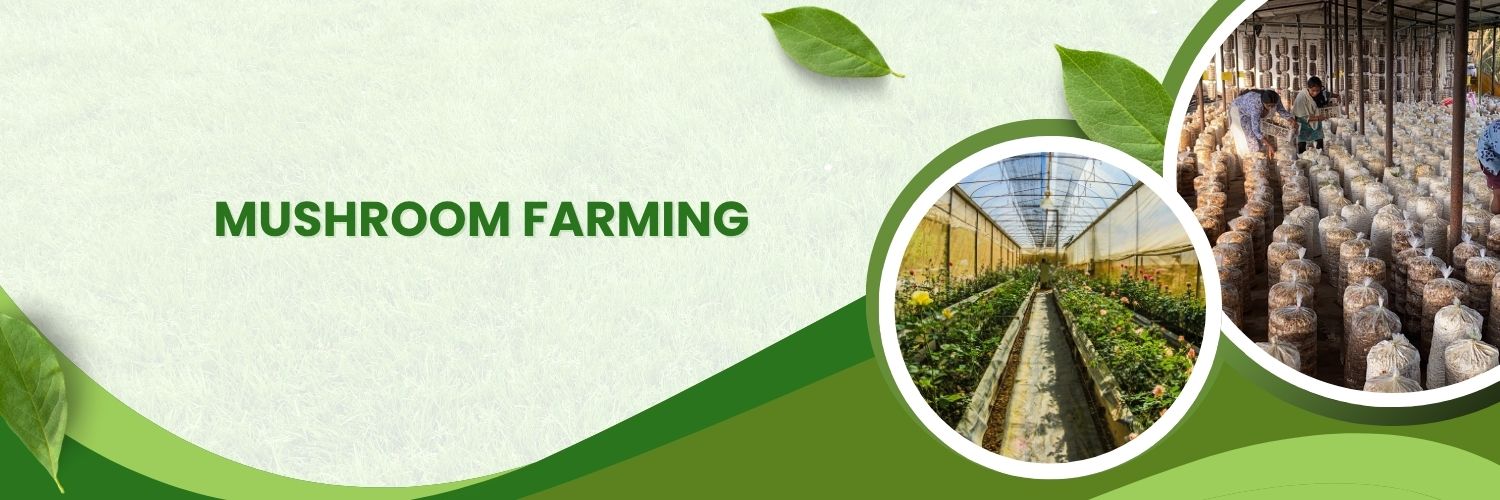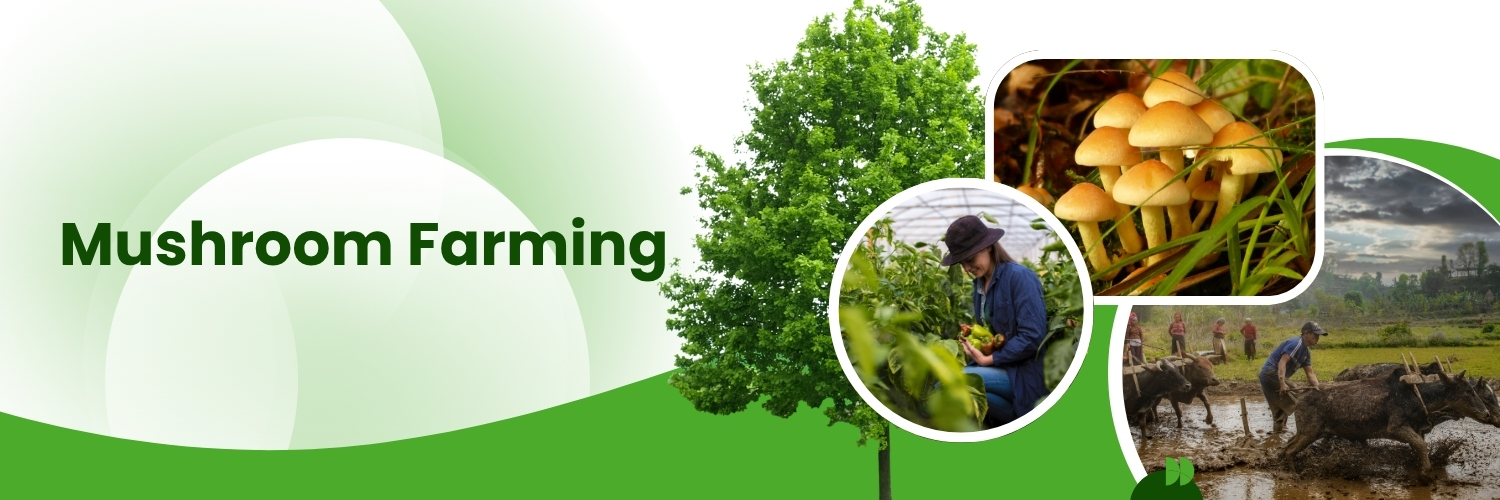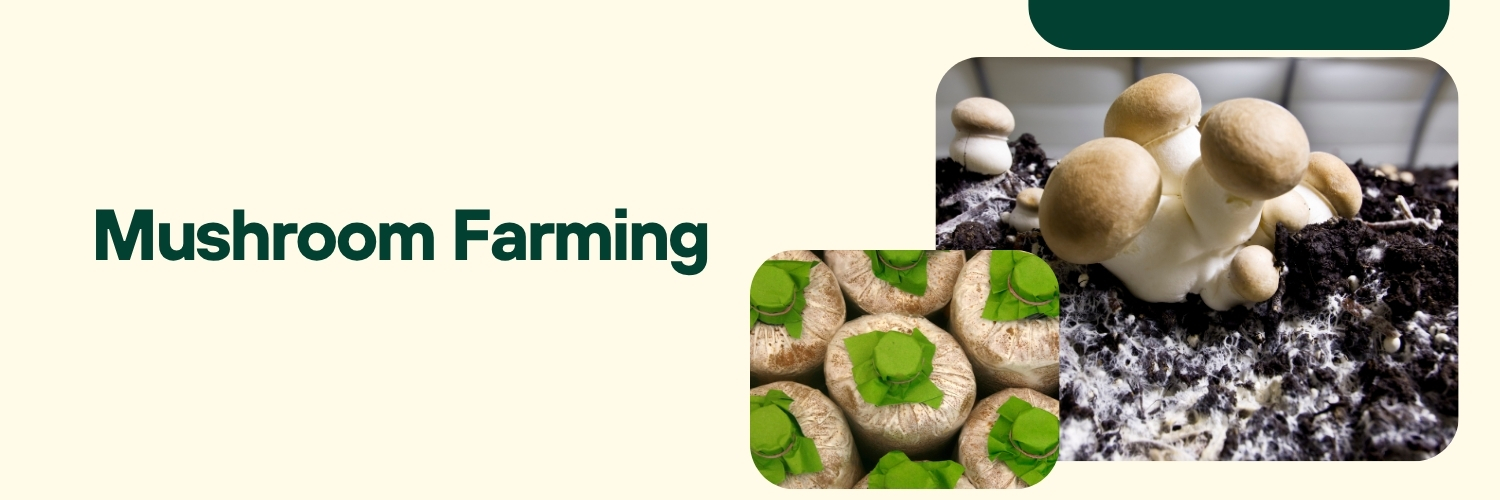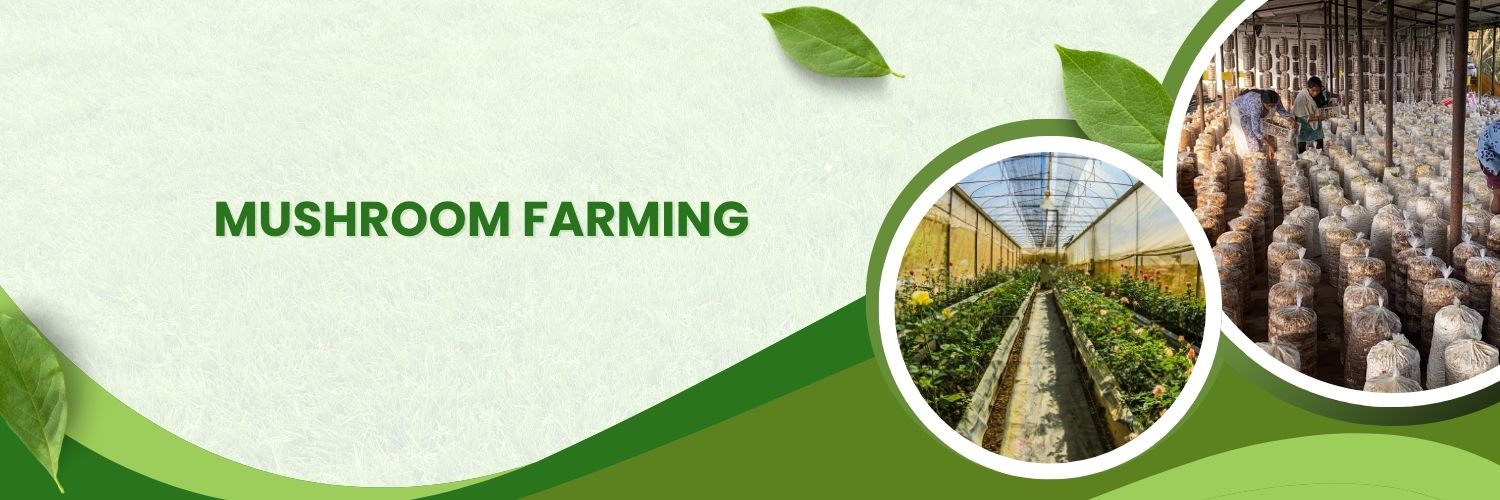All About Mushroom Farming: A Profitable Agri Venture

Strong 8k brings an ultra-HD IPTV experience to your living room and your pocket.
Mushroom farming has emerged as a thriving segment of modern agriculture, attracting the attention of farmers, entrepreneurs, and urban agriculturists alike. Unlike conventional crops that require vast land and significant resources, mushrooms can be cultivated in controlled environments with limited space and minimal investment. This makes mushroom farming not only an accessible but also a highly profitable venture, especially in today’s health-conscious and sustainability-driven world.
What is Mushroom Farming?
At its core, mushroom farming involves the cultivation of edible fungi in a carefully managed environment. Unlike most crops, mushrooms do not require sunlight to grow, as they derive nutrients from decomposing organic matter rather than through photosynthesis. This unique trait makes them ideal for indoor cultivation, enabling year-round production irrespective of climate conditions.
There are several types of mushrooms cultivated commercially, such as button mushrooms, oyster mushrooms, shiitake, and milky mushrooms. Each variety has its own specific requirements for temperature, humidity, and growing substrate, but overall, mushroom cultivation remains a low-risk, high-return agricultural activity.
The Growing Popularity of Mushrooms
The increasing demand for mushrooms is driven by several global trends. As consumers shift toward plant-based diets, mushrooms have become a favored alternative due to their rich umami flavor and high nutritional value. They are packed with essential nutrients like proteins, vitamins (especially B-complex and D), minerals, and antioxidants, making them a superfood in the truest sense.
Moreover, the versatility of mushrooms in culinary applications—ranging from soups and salads to main courses—has boosted their popularity. Restaurants, supermarkets, and health-conscious consumers are constantly seeking a reliable supply, creating a lucrative market for mushroom growers.
Benefits of Mushroom Farming
One of the most appealing aspects of mushroom farming is its low barrier to entry. It does not require fertile soil, large plots of land, or heavy machinery. In fact, mushrooms can be grown in dark rooms, sheds, or even unused basements. This opens up opportunities for aspiring agri-entrepreneurs who may not have access to traditional farmlands.
Additionally, mushrooms have a fast growth cycle. Certain varieties like oyster mushrooms can be harvested within 3 to 4 weeks of spawning. This quick turnaround allows farmers to produce multiple harvests in a year, thereby maximizing profits.
Mushroom farming is also environmentally friendly. It utilizes agricultural waste such as straw, sawdust, and husks as growing media, contributing to waste recycling and sustainable farming practices. The spent substrate left after cultivation can be composted and used as organic fertilizer, adding further value.
Infrastructure and Setup for Mushroom Farming
Setting up a mushroom farm requires some basic infrastructure. The first step is choosing the right space—ideally a well-ventilated area that can maintain specific temperature and humidity levels. For example, button mushrooms thrive at cooler temperatures, while oyster and milky mushrooms prefer warmer and more humid conditions.
The growing process typically begins with substrate preparation. Common substrates include wheat straw, paddy straw, sugarcane bagasse, or sawdust, depending on the mushroom variety. These substrates are sterilized to eliminate harmful pathogens before inoculating them with mushroom spawn (the seed material).
Spawn is usually purchased from certified suppliers, although advanced farmers often produce their own in a laboratory setup. Once inoculated, the bags or trays are placed in dark, moist environments for incubation. After a few days or weeks, the mycelium (the vegetative part of the fungus) colonizes the substrate and begins to sprout mushrooms.
Labor and Maintenance
Unlike some farming ventures that are labor-intensive, mushroom farming requires minimal physical effort once the process is established. However, careful monitoring of environmental conditions is essential. Maintaining proper hygiene, controlling pests, and ensuring appropriate temperature and moisture levels are crucial to achieving good yields.
Since mushrooms are perishable, timely harvesting and efficient post-harvest handling are important. Many growers invest in simple cold storage facilities to extend the shelf life of their produce, especially if they are supplying to urban markets or restaurants.
Marketing and Sales for Mushroom Farming
The market for mushrooms is vast and varied. Local vegetable markets, grocery stores, hotels, restaurants, and health food shops are always in need of fresh mushrooms. Some mushroom farmers also process their produce into value-added products like mushroom pickles, dried mushrooms, powders, or ready-to-cook mixes, which fetch higher prices.
Direct-to-consumer models such as farmers’ markets or online subscriptions have also become popular, especially in urban areas. This not only helps farmers earn better margins but also creates a loyal customer base. Additionally, selling spawn and training new growers can open new revenue streams for experienced cultivators.
Challenges in Mushroom Farming
Despite its many advantages, mushroom farming does come with its own set of challenges. Maintaining the ideal environmental conditions can be tricky, especially in regions with extreme weather. Contamination from bacteria, molds, or pests can affect the yield and quality of the mushrooms if not managed properly.
There is also a learning curve involved, particularly for beginners unfamiliar with fungal cultivation. However, with the growing popularity of mushroom farming, training programs, online courses, and government initiatives are becoming more accessible to support newcomers in the field.
Economic Potential and Investment
The financial potential of mushroom farming is impressive. A small-scale setup can be started with minimal capital—sometimes under ₹50,000—depending on the scale and variety of mushrooms being cultivated. As the business grows, farmers can expand their operations into climate-controlled units, increasing both yield and profits.
With proper management, mushroom farmers can earn substantial monthly incomes. For instance, growing oyster mushrooms in a 500 sq ft area can yield several hundred kilograms per cycle, translating into significant earnings after accounting for costs. The key lies in maintaining quality, building strong distribution channels, and staying updated with market trends.
Future of Mushroom Farming in India
Mushroom farming in India is experiencing a surge in popularity, supported by government schemes, research institutions, and agribusiness incubators. States like Himachal Pradesh, Haryana, Punjab, and Tamil Nadu have become notable hubs for mushroom cultivation, offering training and subsidies to farmers.
Urban mushroom farming is also gaining momentum. Vertical farming, hydroponic integrations, and small-scale setups in cities are allowing individuals to grow mushrooms at home or on rooftops. As demand for clean, locally grown food increases, mushrooms are poised to play a central role in the future of urban agriculture.
Conclusion
Mushroom farming is more than just a niche agricultural activity—it is a sustainable, profitable, and future-ready business model. With its low investment requirements, fast production cycles, and growing market demand, it offers a promising livelihood opportunity for both rural and urban populations. Whether you're a traditional farmer seeking diversification or an aspiring entrepreneur looking for a smart agri-business idea, mushroom farming holds immense potential waiting to be tapped.
Note: IndiBlogHub features both user-submitted and editorial content. We do not verify third-party contributions. Read our Disclaimer and Privacy Policyfor details.







